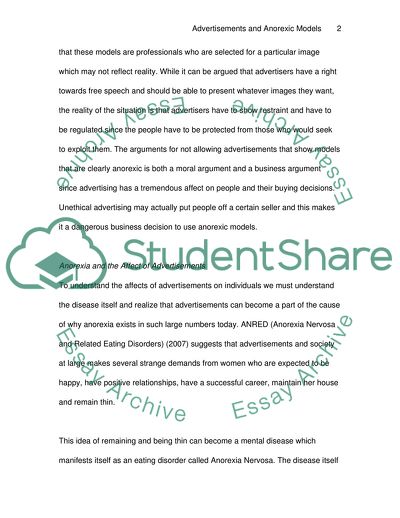Cite this document
(Advertisements and Anorexic Models Essay Example | Topics and Well Written Essays - 1500 words, n.d.)
Advertisements and Anorexic Models Essay Example | Topics and Well Written Essays - 1500 words. https://studentshare.org/marketing/1710457-should-advertisements-be-allowed-to-show-models-in-their-ads-that-are-clearly-anorexic
Advertisements and Anorexic Models Essay Example | Topics and Well Written Essays - 1500 words. https://studentshare.org/marketing/1710457-should-advertisements-be-allowed-to-show-models-in-their-ads-that-are-clearly-anorexic
(Advertisements and Anorexic Models Essay Example | Topics and Well Written Essays - 1500 Words)
Advertisements and Anorexic Models Essay Example | Topics and Well Written Essays - 1500 Words. https://studentshare.org/marketing/1710457-should-advertisements-be-allowed-to-show-models-in-their-ads-that-are-clearly-anorexic.
Advertisements and Anorexic Models Essay Example | Topics and Well Written Essays - 1500 Words. https://studentshare.org/marketing/1710457-should-advertisements-be-allowed-to-show-models-in-their-ads-that-are-clearly-anorexic.
“Advertisements and Anorexic Models Essay Example | Topics and Well Written Essays - 1500 Words”. https://studentshare.org/marketing/1710457-should-advertisements-be-allowed-to-show-models-in-their-ads-that-are-clearly-anorexic.


